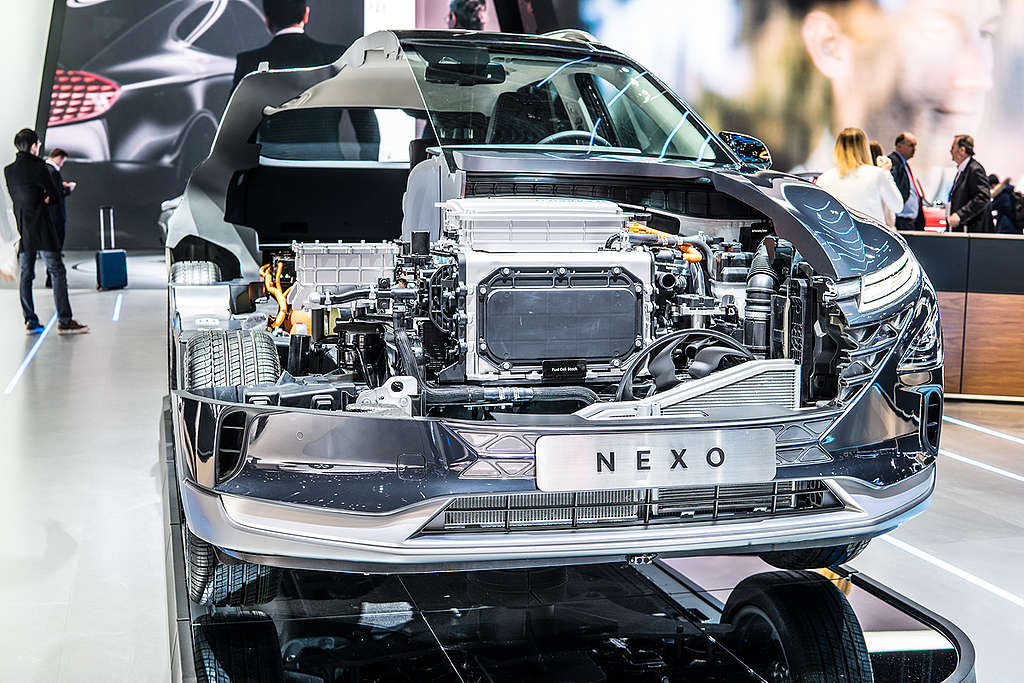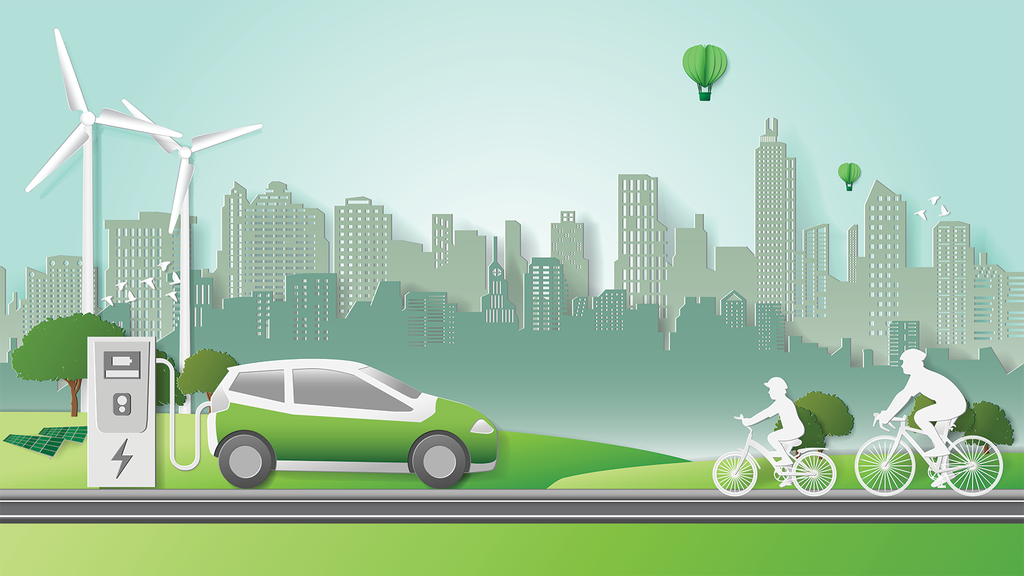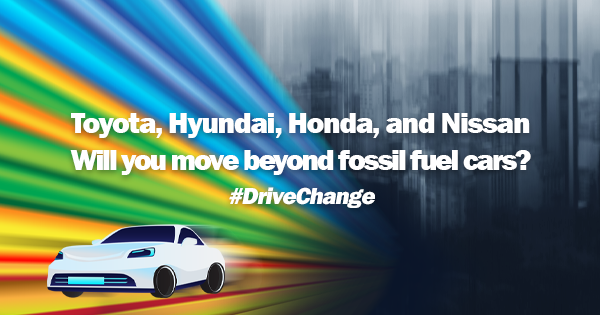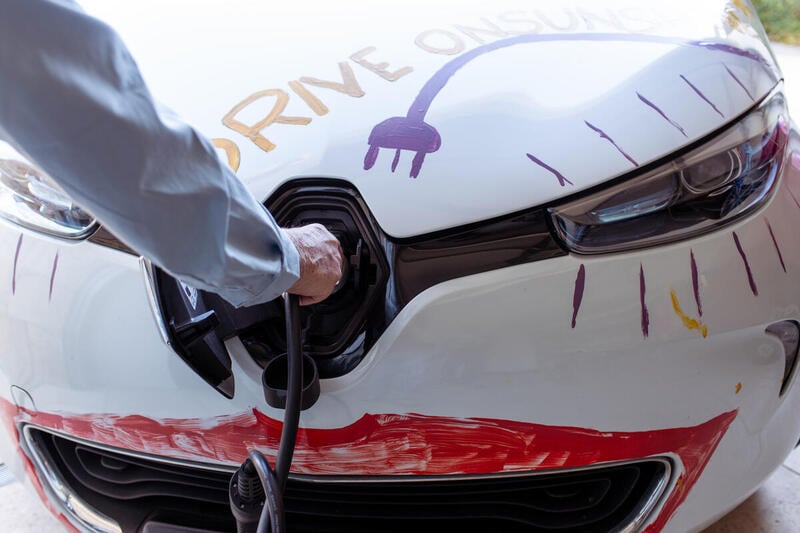Recently, the former chair of the UK Hydrogen & Fuel Cell Association Chris Jackson stepped down prior to the release of the UK’s first-ever hydrogen strategy. “I believe passionately that I would be betraying future generations by remaining silent on the fact that blue hydrogen is at best an expensive distraction, and at worst a lock-in for continued fossil fuel use that guarantees we will fail to meet our decarbonization goals,” Jackson said.
While hydrogen is the most abundant element in the universe, it has to be obtained through energy-intensive processes.

In the recently published “Hydrogen Ladder” by Michael Liebreich, founder of BloombergNEF, hydrogen applications are ranked from unavoidable1 for decarbonization to uncompetitive. It is clear that while hydrogen is an unavoidable energy choice in certain sectors, it is obviously uncompetitive for short-medium distance urban and suburban car travels.2
Due to problems with hydrogen production and energy efficiency, a number of European automakers have stopped putting more effort into developing hydrogen cars. Honda also decided to pull out from hydrogen cars this year. By March 2021, the total number of hydrogen cars distributed around the world was less than 40,000. By comparison, the number of electric cars sold around the world had well exceeded 10 million in 2021.
Hyundai and Toyota’s wrong bet on hydrogen cars
Currently, Hyundai and Toyota are the only two automakers globally that continue to produce hydrogen cars. In September 2021, Hyundai announced an internal combustion engine (ICE) phase-out date of 2035 in the EU and 2040 in other major markets. They launched the “Hydrogen Society” along with a commitment to go carbon neutral by 2045. But they failed to address the key concerns with FCEV’s energy inefficiency and how to ensure sufficient green hydrogen supply. Moreover, they still haven’t proposed a phase-out date for ICE vehicles in all markets by 2030, which is key to keep global temperature rise within 1.5℃.3
In 2019, Toyota has declared their strategy toward the net-zero era by transforming fossil fuel powered hybrids into hydrogen powered hybrids. To maintain the scale of production, they insist on hybrid production, while shying away from transitioning to BEVs. However, they are still not excluding the production of fossil fuel powered hybrids and fossil fuel cars. By taking a detour to decarbonize, Toyota has not announced an official phase-out date of fossil fuel vehicles.
Why are FCEVs a dangerous mistake for the climate?
- 95% of hydrogen fuel is generated using natural gas through energy intensive processes that produce a large amount of CO2 emissions.
As of 2020, over 95% of the world’s hydrogen fuel is produced using the steam methane reforming process (SMR).4
In South Korea, where hydrogen technology is invested and developed by major car companies like Hyundai and the government, most hydrogen is produced by reacting the methane in natural gas with hot, high-pressure water vapor. The problem is that the process generates not only hydrogen but also a lot of carbon dioxide.
The formula is:
CH4 (natural gas) + 2H2O (water) → CO2 (carbon dioxide) + 4H2 (hydrogen).
This is referred to as grey hydrogen, because a lot of greenhouse gases are emitted in the production process, worsening the climate crisis. The process is estimated to emit about 9.3kg of CO2 per 1kg of grey hydrogen produced, which is similar to the emission of hybrid vehicles while driving (9.65 kg-CO2-e), and more than the emission of an EV while driving (5.83 kg-CO2-e). In addition, a substantial amount of methane is leaked during extraction and transport of natural gas(methane), which makes grey hydrogen worse for climate, because the global warming potential of methane is 84~87 times that of CO2 over the first 20 years and 28-34 times that of CO2 over its lifespan.5
Hydrogen suppliers which are backed by oil and gas companies claim that blue hydrogen, which is still made from burning natural gas but incorporates carbon capture, utilization and storage (CCUS) into the process to be low-carbon. But it has the same methane leak issue as grey hydrogen.
A recent joint study by Stanford University and Cornell University found that greenhouse gas emission associated with blue hydrogen production is only 10% less compared to grey hydrogen production. In all scenarios in the study, blue hydrogen production created more greenhouse gas equivalents than simply burning natural gas.6
Hyundai proposed to use all green hydrogen, which is made from renewable energy. But they haven’t confirmed how they can ensure sufficient renewable energy supply to meet the large demand for green hydrogen if FCEVs were to be the majority of their production. This brings us to the next problem with energy efficiency of using hydrogen to power vehicles.
- Energy efficiency is significantly worse in fuel cell processes of FCEVs.
The process of producing hydrogen using natural gas or renewable energy and then converting hydrogen back into electrical energy and further transferring power to the wheels of vehicles incurs a lot of energy loss. In FCEVs, hydrogen is injected into the fuel cell to generate electricity through chemical reaction with oxygen. In this process, about half of the energy is transformed into thermal energy, not electrical energy. According to the UK Climate Change Committee’s report “Hydrogen in the low-carbon economy”, the percentage of the initial input energy which reaches the wheels is 41-44% in FCEV, 30% in gasoline or diesel cars, and 86% in electric cars.7 In all, electric cars have the best energy efficiency.
What future mobility options do we have then? Less cars, and less social and environmental impacts of batteries!
The future mobility landscape should have fewer cars, more car-sharing, better public transport run on renewable electricity, better spatial planning, and better provision for cyclists and pedestrians. Major automakers can play a pivotal role to provide green mobility services, from car-sharing and charging facilities to reusing batteries in energy storage systems, just to name a few.

Consumers have also raised concerns for the social and environmental impacts of lithium-ion batteries. Automakers should aim to increase durability (i.e. a greater number of charge cycles possible), longevity, reparability, reuse and recyclability of batteries to minimise the use of virgin materials. Ensuring transparency, clear accountability and demonstrable due diligence in supply chains where minerals are sourced could help protect both human rights and the environment.
In essence, there is no lack of business opportunities in the zero carbon future for carmakers. The question, rather, is whether companies like Hyundai and Toyota are willing to transform their business models to be multifaceted ‘mobility suppliers’ and catch up with the industry trend towards electric vehicles.
Join the #DriveChange campaign to get major car companies on track to achieve zero carbon emissions for ourselves, our future, and our planet!
NOTES
- On the “unavoidable” end lies the existing uses of highly polluting grey hydrogen produced from unabated fossil fuels — such as ammonia-based fertiliser and oil refining, which are responsible for 3-4% of all global carbon emissions. Seasonal power storage, steel, chemicals, shipping and long-haul aviation (using liquid hydrogen or synthetic fuels derived from H2) are also high up.
- Michael Liebreich: Hydrogen Ladder
- According to ICCT, sales of electric vehicles (EVs) will need to reach between 35% and 75% of the global market in 2030, with higher levels in major markets. The 3 best selling automakers make up about 36% of global market share. Hence, top car makers’ progressive action to phase out ICE vehicles sales by 2030 is imperative to realising the scenario.
- Robert Rapier, Forbes, Estimating The Carbon Footprint Of Hydrogen Production
- According to recently conducted research by EDF, 3.7% of natural gas produced in the Permian Basin in Texas leaked into the atmosphere. Natural gas consists mostly of methane which is capable of warming the planet 84 to 87 times more than CO2 over 20 years on average.
- Robert W. Howarth, Mark Z. Jacobson, How green is blue hydrogen?
- UK Climate Change Commission’s report “Hydrogen in the low-carbon economy”





Discussion
The article does seem to miss the point that there will be increasing amounts of electricity from wind/tidal/wave power which will become available at times it cannot be used - eg. at night. UK renewables supply ~ 40% of UK electricity (~12% total UK energy use). As renewable energy is ramped up to power heating (via heat pumps or hydrogen/hydrogen based gases in the existing grid) this is set to increase enormously over the next decade or so. Storage of otherwise unused power will be critically important in achieving net zero. Using this electricity to produce hydrogen so that it can feed back when needed via existing converted gas power plants is one way of using it to balance demand and supply. Another use will be in air transport, where battery weight is likely to remain prohibitive for some time. Using it as a long distance backup (rapid refuelling) for hybrid road vehicles designed primarily to run on mains electricity via batteries would seem a very logical step.
Thank you George. In the article, we aim to point out the problems with FCEVs, not denouncing hydrogen as a whole as an energy source in the net-zero era. We want to emphasize that gray hydrogen is not the way to go, major carmakers should guarantee to source sufficient renewable energy and propose concrete ways to solve the energy inefficiency problems with hydrogen passenger vehicles before advertising FCEVs as the solution for the zero-carbon future.